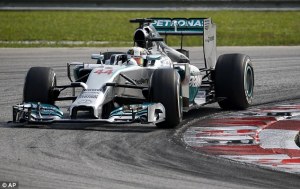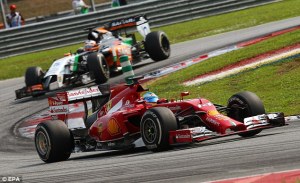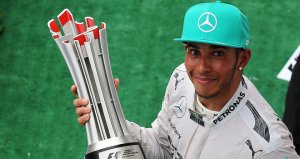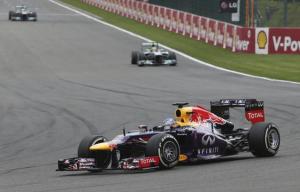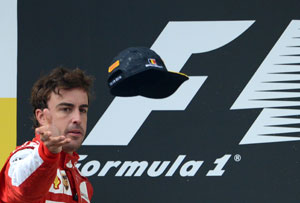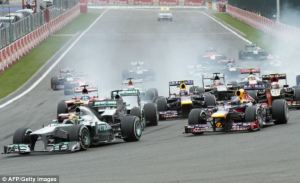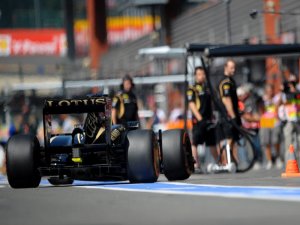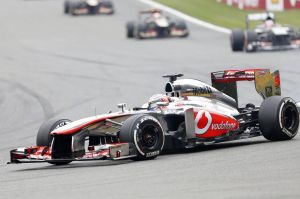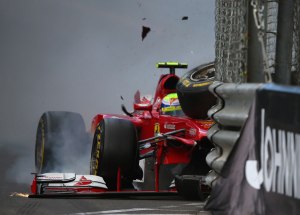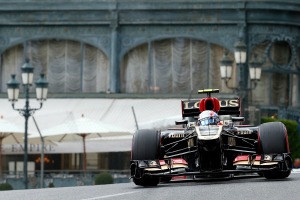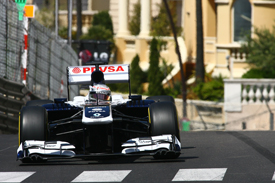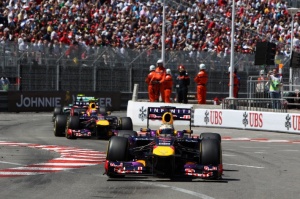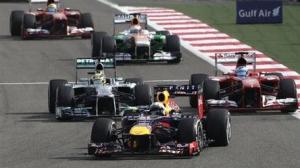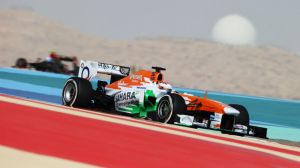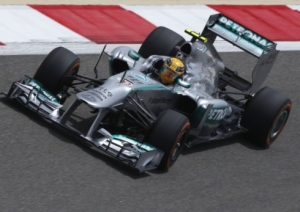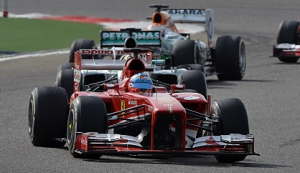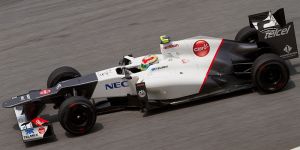So, it’s two wins out of two for Mercedes so far in 2014. Not only that, but this time both cars were reliable meaning that the Brackley based team achieved their first one, two finish in nearly 60 years as Lewis Hamilton led home team-mate Nico Rosberg to take his first win, and first podium finish, since last year’s Hungarian grand prix victory. The team now lead the world constructors’ championship.
To be absolutely frank, Hamilton’s victory never looked in doubt from the time that the lights went out to signal the start of the race. Unlike in Australia, the 2008 world drivers’ champion’s Mercedes engine was firing on all cylinders from the get go as he streaked away from pole position and led into the first corner, with his team-mate slotting into second place behind him.
While it was Rosberg who dominated in Australia as Hamilton was forced to retire just a few laps in, in Sepang it was most definitely Hamilton’s turn to stamp his authority on proceedings. The Englishman pulled seemingly effortlessly away from the rest of the field, including Rosberg who seemed to be struggling with his tyres, and, like Rosberg in Melbourne, he was soon asking his team whether there was anything more he could do for reliability purposes.
Indeed, Hamilton only relinquished the lead once during the entire race, albeit very briefly to the Force India of Nico Hulkenberg – who drove an excellent race to claim fifth place – which was on a different tyre strategy. Hamilton even achieved the first Grand Chelem of his Formula 1 career by leading every lap of the race and setting the fastest lap in addition to his pole position and race victory, eventually finishing the race 17.3 seconds clear of Rosberg, with Red Bull Racing’s Sebastian Vettel a further 7.2 seconds adrift.
Vettel seemed pretty upbeat after the race, though. The German appeared pleased that the Milton Keynes based squad looked like they had closed the gap a bit to Mercedes, but I wonder how much of that is positive spin winning out over harsh reality. While it was certainly true that, just as in Australia, Red Bull looked to have the second fastest car, the fact of the matter is that they still finished around 25 seconds behind the race winner, just like in Australia (before the disqualification of Daniel Ricciardo, of course).
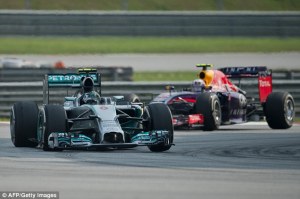
Vettel was upbeat after the race, but while he got close to Rosberg at times, he was never able to attempt a pass
You’ve also got to consider that Sepang is a circuit that plays very much to Red Bull’s strengths, with plenty of high-speed corners that allow them to show off their continued aerodynamic edge. Unfortunately for them, though, Sepang also features some long straights which allowed Mercedes to show of the undoubted superiority of their power train, as Vettel seemed to indicate when talking to Rosberg before the podium ceremony. The bottom line is that, Red Bull were never close to challenging for victory, and with a pit stop error resulting in the eventual retirement of Daniel Ricciardo (who also gets a 10 place grid penalty for Bahrain), Red Bull also only got one car to the chequered flag.
Another reason to suspect that Red Bull might not have made the inroads they seem to be suggesting that they have is Ferrari’s optimism that in Bahrain they will leapfrog the reigning world constructors’ champions. Ferrari were a very distant fourth in Malaysia, with Fernando Alonso finishing over 10 seconds adrift of Vettel, but Bahrain will bring different challenges to Sepang, challenges that the Maranello based squad think that they are better placed to overcome than Red Bull.
Bahrain is a track where fuel efficiency is expected to play much more of a role than it did in Malaysia and Ferrari think that their power unit is more efficient than its Renault counterpart. When you consider the fuel consumption figures displayed during the race, it certainly looked like the Red Bull cars were using more than Mercedes, certainly when compared to Lewis Hamilton who was considerably more fuel-efficient than Rosberg.
The only other talking point of note in Malaysia was Williams. After the trauma of “Fernando is faster than you” at Ferrari, poor Felipe Massa had to endure “Valtteri is faster than you” from his Williams engineer at Sepang. So long the dutiful and faithful company servant at Ferrari, Massa must have thought that he’d left those sort of radio messages way behind in his rear view mirrors when he move to the Grove-based team for 2014. That appears not to be the case, however.
Williams believed that Massa’s team-mate Valtteri Bottas, on slightly fresher tyres than the Brazilian, was quicker and better placed to challenge the McLaren of Jenson Button for sixth place in the closing stages of the race, hence the radio message urging Massa to make way for his Finnish team-mate. The 2008 world drivers’ championship runner-up wasn’t having any of it, though, refusing to yield to his less experienced team-mate meaning that Williams had to settle for seventh and eighth places, with Bottas following Massa across the line.
While Massa and Williams deputy team principal Claire Williams denied that there was any issue in their post race interviews, Bottas was pretty taciturn and didn’t look at all happy. Massa will be welcoming the arrival of his Ferrari race engineer, and long-term friend, Rob Smedley at Williams in Bahrain. He may well need the moral support.
Whatever the situation at Williams, one thing is for certain: Lewis Hamilton will not be remotely bothered. After the disappointment of Australia, Hamilton bounced back in the best possible way in Malaysia. His 2014 championship challenge starts right here, and if he can maintain this sort of form there may well be no stopping him. As the Malaysian grand prix weekend proved, whether the weather is wet or dry, Mercedes, and Hamilton, seem to fly
